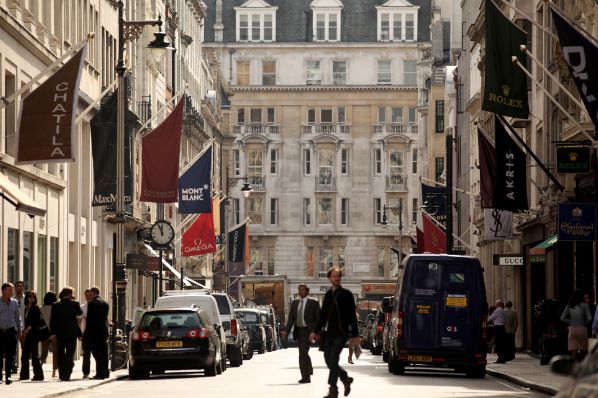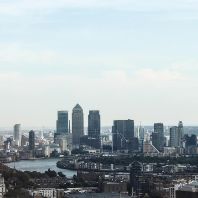For the first time in five years, Hong Kong’s Causeway Bay has replaced New York’s Upper 5th Avenue as the world’s most expensive retail street by rental value, according to data from Cushman & Wakefield. The annual ‘Main Streets Across the World’ report, now in its 30th year, tracks 446 of the top retail streets around the globe, ranking them by their prime rental value according to Cushman & Wakefield’s proprietary data, which includes a list of the most expensive streets in 65 countries.
|
TOP 10 MOST EXPENSIVE RETAIL LOCATIONS BY COUNTRY |
|||||
|
Rank 2018 |
Rank 2017 |
Location |
City |
Country |
Rent US$/sq ft/year |
|
1 |
2 |
Causeway Bay (main street shops) |
Hong Kong Island |
Hong Kong * |
2,671 |
|
2 |
1 |
Upper 5th Avenue (49th - 60th Sts) |
New York |
USA |
2,250 |
|
3 |
3 |
New Bond Street |
London |
United Kingdom |
1,744 |
|
4 |
5 |
Avenue des Champs Elysees |
Paris |
France |
1,519 |
|
5 |
4 |
Via Montenapoleone |
Milan |
Italy |
1,466 |
|
6 |
6 |
Ginza |
Tokyo |
Japan |
1,219 |
|
7 |
7 |
Pitt Street Mall |
Sydney |
Australia |
964 |
|
8 |
8 |
Myeongdong |
Seoul |
South Korea |
908 |
|
9 |
9 |
Bahnhofstrasse |
Zurich |
Switzerland |
854 |
|
10 |
10 |
Kohlmarkt |
Vienna |
Austria |
515 |
|
*Hong Kong is a Special Administrative Region (SAR) within China |
|||||
A significant decline in New York rents has seen Upper 5th Avenue slip back to second place globally, with average rents at €1,996 ($2,250) psf/yr compared with €2,662 ($3,000) in the previous 12-month period. Despite a small decline in average rents, Hong Kong’s Causeway Bay area takes top spot, with a figure of €2,370 ($2,671) psf/yr. London’s New Bond Street meanwhile is the most expensive European location, in third place globally, with rents broadly flat year-on-year at €1,548 ($1,744) psf/yr, underlining the fact that luxury and high-end retailers still see the UK’s capital as a key retail destination.
Elsewhere in the top 10, the Avenue des Champs Elysees is in fourth place (€1,348 / $1,519 psf/yr), with Milan’s Via Montenapoleone in fifth position (€1,301 / $1,466 psf/yr). In sixth place is Tokyo’s Ginza, which is the highest-ranked Asian street after Hong Kong, with rents on average costing (€1,082 / $1,219 psf/yr). Streets in emerging markets in Africa and Latin America account for most of the locations at the other end of the ranking, with rents as low as €17.7-26.6 ($20-30) psf/yr.
The first edition of the Main Streets report in 1988 showed New York’s East 57th Street was the world’s most expensive high street at €377 ($425) psf/yr. Since then the number one spot has been dominated by streets in either New York or Hong Kong, with only Tokyo’s Ginza outside these able to achieve this.
Report author Darren Yates, Head of EMEA Retail Research at Cushman & Wakefield, said: “There is still a significant appetite for premium retail sites globally, with the top retailers using stores as part of their customer experience strategy. While global trends are not completely uniform, there are some common themes. The most notable include the continued growth of online, omnichannel retailing as standard and significant investment in store design. While technology is still a major disruptor in retailing, it is also enabling physical retail to fight back as it allows retailers to better understand their customers and to enhance the in-store experience.”
Justin Taylor, Head of EMEA Retail at Cushman & Wakefield, said: “There is still a healthy future for the sector but we are moving to a ‘beyond retail’ phase driven by societal and technological change meaning business models will also need to adapt. Traditional retail will survive and in many locations prosper, but it will likely form a smaller part of the overall occupier mix. Even in these most expensive high street locations, we are likely to see a mix of uses such as restaurants, leisure, fitness and services. As a result, traditional retail is, therefore, being resized, reinvented and reimagined. This is most evident in the US and the UK, both of which have felt the force of retailer restructuring and shrinking store networks in some sectors, as well as a downward readjustment of rents in some areas. Equally, however, the disruption is also creating opportunities for exciting new operators and formats to emerge.”















